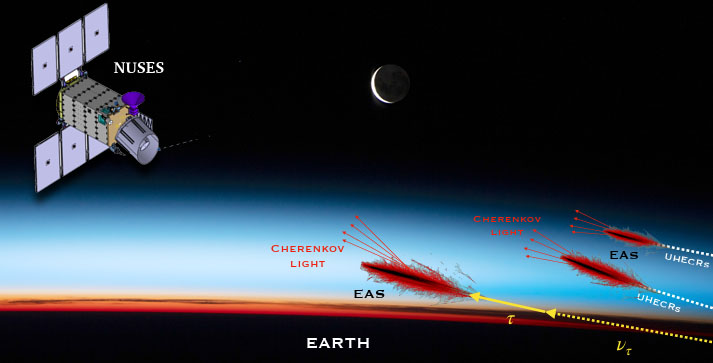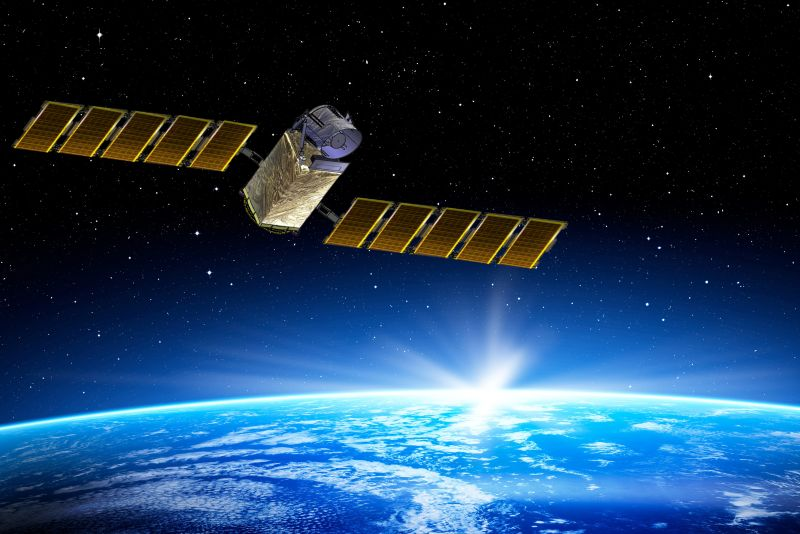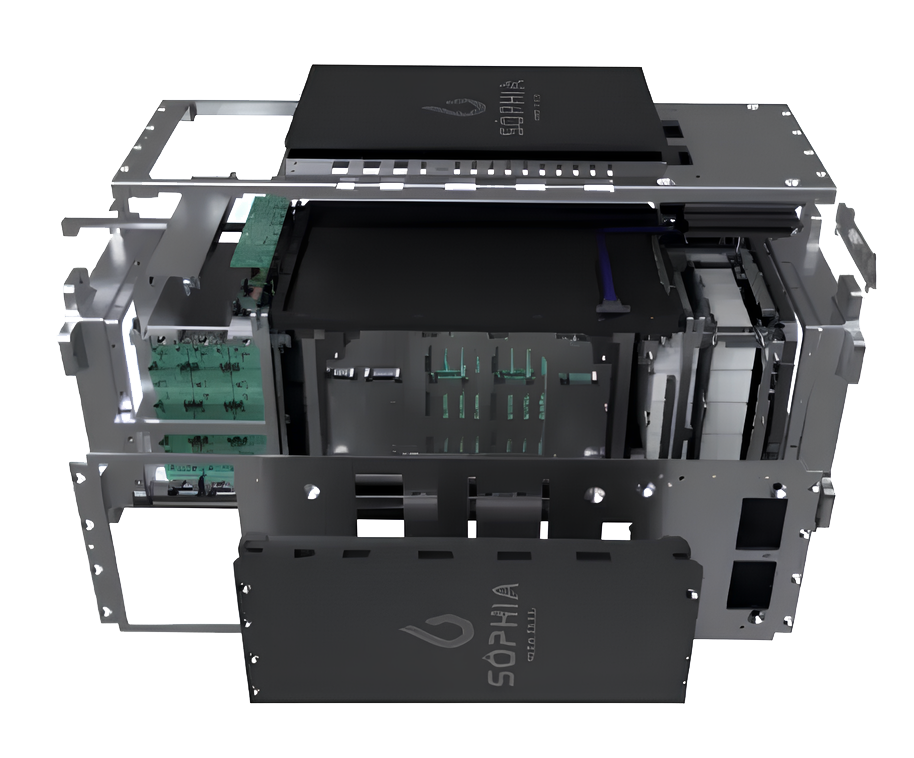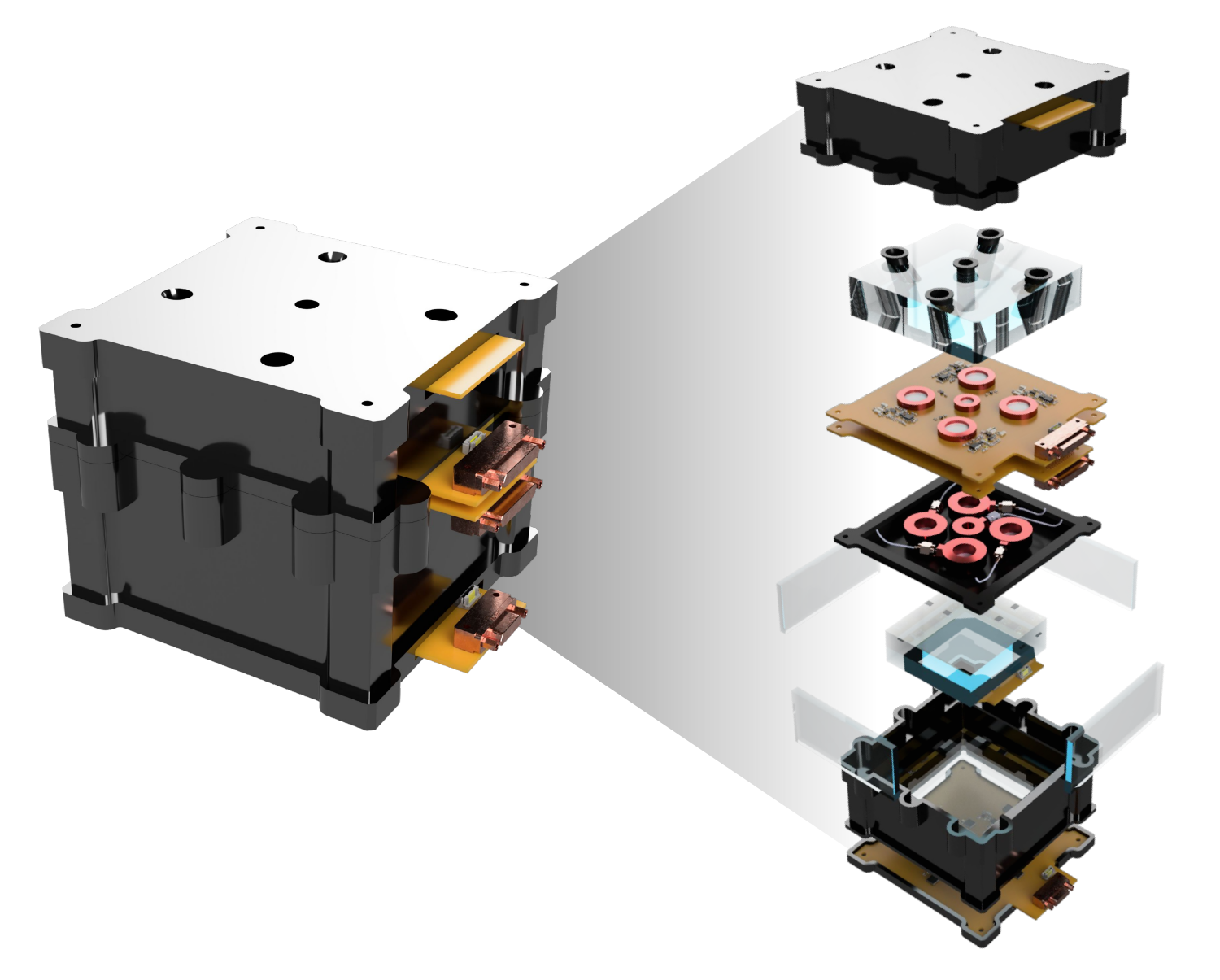Related Pages
Everything about Nuses
NUSES - Terzina payload
Terzina is one of the two scientific payloads aboard the Italian NUSES satellite. It is a compact, space-based telescope designed to detect Cherenkov light from Extensive Air Showers (EAS) initiated by Ultra-High Energy Cosmic Rays and neutrinos. Featuring a Schmidt-Cassegrain optical system and a Silicon Photomultiplier (SiPM) camera, Terzina integrates a custom front-end and DAQ architecture capable of high-speed, low-power acquisition and real-time triggering in low Earth orbit.
Read MoreData Concentrator for Space Instruments
Modern space missions for astroparticle physics and space weather monitoring require robust and flexible data concentrator systems. Designed to interface with heterogeneous subdetectors, this architecture enables real-time event handling, synchronized acquisition, and reliable communication with onboard computers.
Read MoreNUSES Space Mission
NUSES is an Italian-led space mission aimed at validating innovative technologies and scientific instruments for the study of cosmic rays, space weather, and neutrinos. With two independent payloads—Ziré and Terzina—the satellite represents a significant step toward next-generation orbital observatories.
Read MoreNUSES - Zirè payload
Ziré is one of the two payloads aboard the Italian NUSES satellite, designed to detect low- and medium-energy cosmic rays and gamma rays. It integrates a Fiber Tracker, Plastic Scintillator Tower, gamma-ray calorimeter (CALOg), and an Anti-Coincidence System, all read out via SiPMs. Ziré enables 3D particle tracking, charge discrimination, and gamma-ray spectroscopy, serving as a technology pathfinder for future space-based astroparticle detectors.
Read MoreLEM - Low Energy Module
The Low Energy Module (LEM) is a compact, high-precision particle spectrometer developed for the NUSES satellite to detect low-energy protons and electrons in low Earth orbit. The detector employs a hybrid readout system combining silicon PIPS sensors and plastic scintillators with SiPMs, supported by a powerful onboard DAQ and FPGA firmware, enabling high-rate histogram and list mode acquisition.
Read MoreNUSES Collaboration Meeting at Gran Sasso Science Institute
On December 18, 2024, the NUSES collaboration meeting was held at the Gran Sasso Science Institute, uniting partners from GSSI, INFN, the Italian Space Agency and Thales Alenia Space. During the event, Nuclear Instruments presented its end-to-end electronics, firmware and software for satellite data acquisition, and participated in technical discussions on the TERZINA and ZIRÉ payloads—from assembly and testing to simulation and data-analysis planning.
Read More




